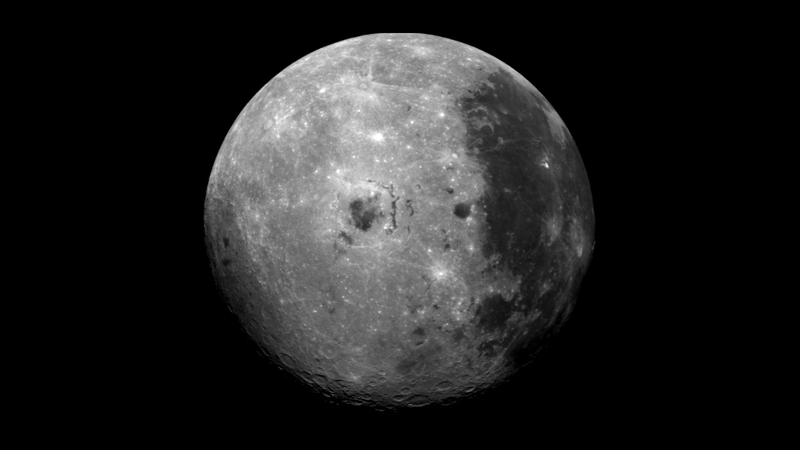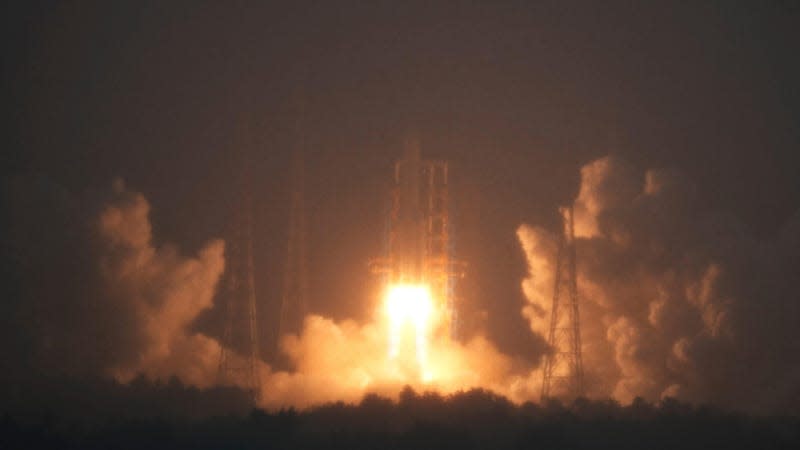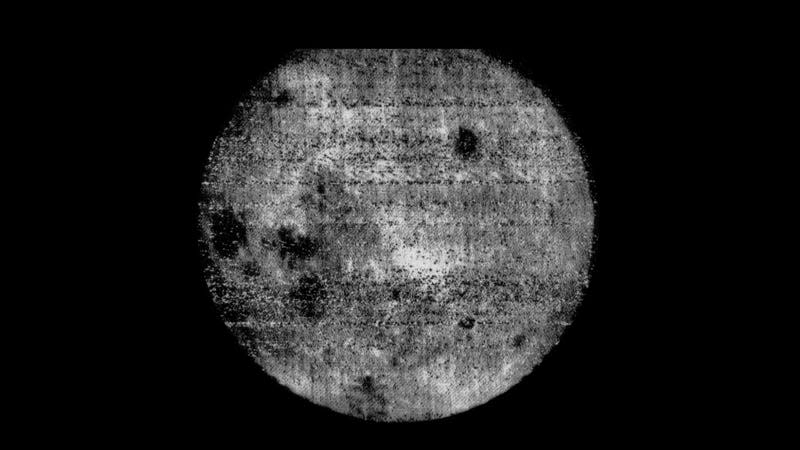China Launches Mission to Return First Samples From Moon's Elusive Far Side

A Chinese probe is on its way to the far side of the Moon to collect samples and drop them off at Earth in what would be a historic first. The Chang’e-6 mission launched from the Wenchang Satellite Launch Center at 5:30 a.m. ET on Friday. The lunar probe was riding on board China’s largest rocket, the 57-meter-tall Long March-5.
With its latest mission to the Moon, China is hoping to become the first nation to return rock and dust from the lunar far side. The far side of the Moon is the hemisphere facing away from Earth and has also been known as the “dark side,” referring to how little we know about it rather than it actually being dark. Unlike the lunar hemisphere facing Earth, the far side is more densely populated with impact craters while largely missing the large, dark seas of cooled lava that dominate the Moon’s near side.

Chang’e 6 will target the Aitken Basin in the lunar south pole, the largest and oldest impact crater on the Moon. This crater may have exposed parts of the Moon’s mantle by blasting it to the surface. By grabbing samples from the far side’s impact crater, the mission could help scientists understand early impacts that helped shape Earth and the Moon and why the lunar far side is different than its near side counterpart.
The Chang’e 6 spacecraft is on a 53-day mission to the Moon’s far side and back, during which it will attempt to collect up to 2,000 grams of lunar sample using an onboard drill. The mission’s orbiter will deliver it to lunar orbit, from where a lander will attempt to touchdown on the Moon’s surface.
The lander will collect samples from the basin and place them in an ascent vehicle that will be launched into lunar orbit. The vehicle will then dock with an orbiter, which will place the samples in a capsule headed for Earth.

Change’6 also requires a communications relay satellite, Queqiao-2, which launched earlier in March, to help it communicate with Earth from the far side of the Moon.
China has had tremendous success with its lunar missions so far. Its Chang’e 5 mission returned samples from the Moon in 2020, making China the third country to collect samples from the Moon and bring them to Earth. The Chinese space agency already has plans for Chang’e 7 and 8, which will be focused on testing the technologies necessary to build a lunar science base.
Chang’e 6, aside from being the first to attempt a sample collection from the lunar far side, is also carrying four payloads on board. The spacecraft’s payloads include a laser retroreflector (a device that reflects concentrated light) from Italy’s National Institute for Nuclear Physics-Frascati National Labs. The device will be used to measure the distance between Earth and the Moon. The ICUBE-Q cubesat from Pakistan is also coming along for the ride, and it’s designed to detect traces of water-ice on the lunar surface.
The probe is expected to land on the Moon in early June.
For more spaceflight in your life, follow us on X and bookmark Gizmodo’s dedicated Spaceflight page.

